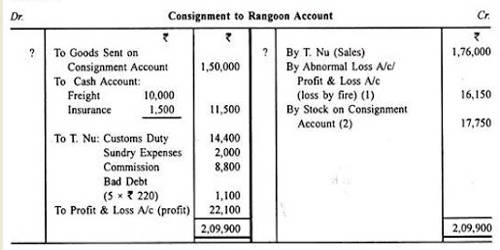Thus deficiencies in any combination of these neurochemicals may contribute to a predisposition to addiction. It is important to note that one person’s reaction to the reward experience may be quite different from another’s. This realization should help us cultivate empathy for those with addiction—it is very likely that others truly do not know how drugs make them feel. In the end, then, Engel’s arguments about the nature of disease and putative benefits of the BPSM seem uncompelling. They also, if accepted, would assign a potentially vast portion of human suffering to medicine, but without improving medicine’s ability to treat that suffering.
Understanding Own Substance Use
- He offered a holistic alternative to the prevailing biomedical model that had dominated industrialized societies since the mid-20th century.1 His new model came to be known as the biopsychosocial model.
- The discussion of “gun violence disease” offered in the next section also constitutes a notable use of the appeal-to-authority maneuver.
- Being in recovery includes a long-time search for a better life and increased quality of life with the collaborative support of others, including professionals, when needed [6, 15, 21, 27, 28].
- These factors are not inherent in the composition of the social structure, are neither stable nor persistent, but are governed by the social values and norms of that social system or group (Bunge 2003).
- In addition to yielding a problematically expansive definition of disease, Engel’s concept-shifting maneuvers also open the door to serious problems in causal inference-making.
To achieve this goal, we first discuss the nature of the disease concept itself, and why we believe it is important for the science and treatment of addiction. This is followed by a discussion of the main points raised when the notion of addiction as a brain disease has come under criticism. Key among those are claims that spontaneous remission rates are high; that a specific brain pathology is lacking; and that people suffering from addiction, rather than behaving “compulsively”, in fact show a preserved ability to make informed and advantageous choices. In the process of discussing these issues, we also address the common criticism that viewing addiction as a brain disease is a fully deterministic theory of addiction. For our argument, we use the term “addiction” as originally used by Leshner [1]; in Box 1, we map out and discuss how this construct may relate to the current diagnostic categories, such as Substance Use Disorder (SUD) and its different levels of severity (Fig. 1). The key added value of the BPSM, in contrast with BMM, is that it accommodates personal, interpersonal, and institutional factors in clinical care within the causal systems affecting health and disease.
Recognise One’s Needs for Support and Treatment
The biopsychosocial model provides a means of considering the myriad of factors that can contribute to the risk of addiction. Here we see how wayward discourse can produce constructs that set research on an unstable path. Because it is unclear what constitutes a “biopsychosocial disease” or the “complex disease” of TMD in the first place, it is not clear what observed heterogeneity and comorbidity mean for the TMD construct. Their meaning is, as Ohrbach (2021, 90) puts it, “within the eyes of the beholder” in TMD research. But if key empirical observations have no clear theoretical significance because one’s framework and core concepts are vague, then the viability of one’s research program is open to question.
- Personal, relational, and environmental resources are often referred to as recovery capital, which contributes to improving wellbeing and the control of substance use [17, 30].
- It tends to perpetuate a focus on biological factors (see, especially the discussion of alcoholism in the Appendix) and edge out existential, spiritual, philosophical, depth psychological, and other nonmedical approaches to suffering (Ghaemi 2011).
- Addictive behaviours are neither viewed as controlled or uncontrolled but as difficult to control a matter of degree.
- This ethical principle is justified and framed as a matter of human rights, which maintains that injection drug users, for example, have the right, like other less stigmatized members of society, to access medical and social services.
Drugs, Health, Addictions & Behaviour – 1st Canadian Edition
- The probability that they would turn out to be complementary or converge on the same endpoint seems extremely small.
- Programs that do not have a plan for creating a culture of recovery among clients risk their clients returning to the drug culture or holding on to elements of that culture because it meets their basic and social needs.
- Conducting in-depth interviews about sensitive subjects requires great awareness and respect for the ‘informants’ emotions and boundaries [12].
- All findings are reported in odds ratios (ORs) or adjusted odds ratios (AORs) using a 95% confidence interval (CI) and p-value for significance criteria.
- It is important to note that the wayward BPSM argument on gun violence has been set forth in the leading health policy journal Health Affairs (Grossman and Choucair 2019).
Adopting this strong position on the BPSM’s capabilities tends to place the researcher in an implicit bind. It creates an expectation that one can and will learn new things about disease by putting the BPSM to work; yet the BPSM itself offers no tools for generating new knowledge. I argue that, in practice, researchers have often bridged this gap between capacities and expectations with specious arguments that seem to deliver new insights about https://virginiadigest.com/top-5-advantages-of-staying-in-a-sober-living-house/ disease. I refer to these specious arguments, which follow certain common patterns, as “wayward” BPSM discourse. Amy Marschall is an autistic clinical psychologist with ADHD, working with children and adolescents who also identify with these neurotypes among others. Routine physical activity is known to promote positive mental wellness, while inadequate or excessive physical activity can contribute to different types of mental health struggles.

In the best case, staff members will have a plan for creating a culture of recovery within their treatment population. A client can meet the psychosocial needs previously satisfied by the drug culture in a number of ways. Strengthening cultural identity can be a positive action for the client; in some cases, the client’s family or cultural peers can serve as a replacement for involvement in the drug culture. This option is particularly helpful when the client’s Sober House connection to a drug culture is relatively weak and his or her traditional culture is relatively strong. However, when this option is unavailable or insufficient, clinicians must focus on replacing the client’s ties with the drug culture (or the culture of addiction) with new ties to a culture of recovery. Hazardous (risky) substance use refers to quantitative levels of consumption that increase an individual’s risk for adverse health consequences.

Lessons from genetics
For a smaller group of people, substances have too many negative consequences, and they need help and treatment from professionals. In Norway, such treatment is provided in both local-community and specialised healthcare facilities, including short-term and long-term inpatient and outpatient treatment. Understanding SUD is crucial because it affects legal regulations, support and treatment services, and the attitudes of both service providers and the public regarding people with SUD.




